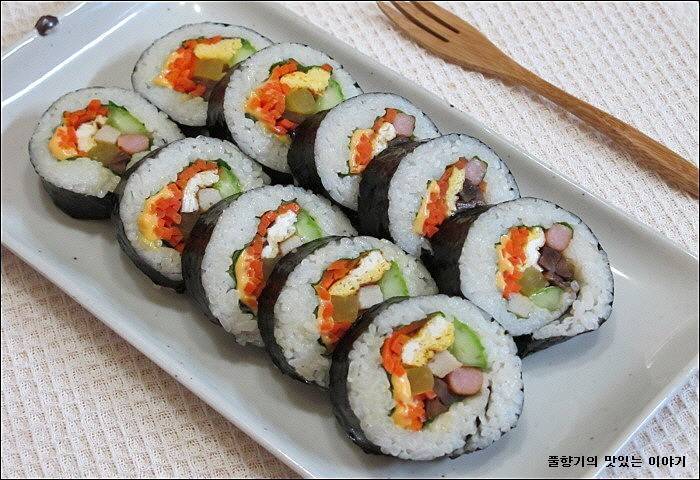안녕하세요 여러분 (annyeonghaseyo yeorobun)
Hello Everyone!
I hope you all enjoyed last weeks post and learning a bit about hiking culture in South Korea. I definitely hope I get a chance to go hiking again while I'm here.
Anyhow, before I start this next topic I am curious, what is your favorite American holiday? Mine is probably Christmas (and no it's not just because of the presents haha). I enjoy being able to spend time with my family and eat a yummy Christmas dinner. Since Halloween is coming up this week I thought it would be fun to talk about holidays in Korea! Do you know anything about Korean holidays?
Like America, Korea also celebrates holidays such as Halloween, Christmas, and "Thanksgiving", but each of these holidays are celebrated a bit differently than in America and not everyone celebrates them either. They also have some other holidays such as Peppero Day and Hangul Day as well that I will talk about a little bit later.
 |
| K-pop (Korean popular music) boy group SHINee dressed up for a big halloween party in Korea. |
However, since this holiday is the soonest I will start by talking about Halloween. Do you all celebrate Halloween? What are you planning to dress up as?
Although Halloween has gained a following in the past few years, it is not a traditionally celebrated holiday. Trick or treating is not common here, though some kindergartens and English academies do a trick or treating event in their classes. Actually, according to my Korean friends and my own experiences this past weekend, it appears that Halloween is mostly celebrated by young adults at special Halloween parties. I went to a couple places over the weekend in the international district known as Itaewon and saw hundreds of young adults in costumes (both Korean and foreigners), halloween themed restaurants, and halloween themed gifts. So although it is very different from America, you can still have fun and celebrate if you are a kid or a college student.
Some buskers (street performers) I saw in Itaewon in Seoul, South Korea.
They were wearing fun teletubbies costumes!
The next holiday I will talk about is Chuseok (추석) or Korean Thanksgiving. People call Chuseok- Korean Thanksgiving, but it is pretty different. First of all, it happens at a different time of year than our American Thanksgiving. Chuseok happens on a day between August through September but it changes every year depending on the lunar calendar (a calendar that makes dates based on the moon phases). Second, Chuseok like Thanksgiving is a time to eat lots of food with family, but instead of celebrating your blessings, you celebrate Chuseok to honor your ancestors (or past relatives who have passed away).
This year Chuseok happened on September 13th. We didn’t have any classes here in Korea and all of our Korean roommates left to be with their families that weekend. My international friends and I didn’t celebrate a lot but we did eat Korean songpyeon (a special rice cake eaten especially for Chuseok). What do you all think of the Korean Chuseok? Do you celebrate Thanksgiving at your house? What kinds of food do you eat?
 |
| Example of Chuseok food. |
Two holidays that are celebrated in the fall in Korea that we don’t have in America, are Hangul Day and Pepero Day. Hangul Day is celebrated on October 9th, and is the day to celebrate the creation of the Korean alphabet (Hangul). Hangul was created by King Sejong the Great during the Joseon Dynasty in 1443. Before Hangul, Korea used to use Chinese characters to write everything, but King Sejong realized that the Chinese characters were a bit too difficult and didn’t really represent Korean. So, King Sejong and his smart friends came up with an alphabet with only 24 letters that was much easier to read and learn than the Chinese characters. In fact, hangul is actually one of the easiest alphabets to learn in the world! From my experience, I think you could easily learn it in less than a week or even a day.
 |
| A picture I took of the King Sejong (세종대왕 se-jong dae-wang) statue outside of the famous Gyeongbokgung Palace in Seoul, South Korea. |
Pepero Day is a cute holiday celebrated on November 11th each year. It is the day that friends and couples will exchange the Korean candy Pepero. Pepero is a thin sweet breadstick with chocolate on them. I asked my Korean friend, and usually pepero day is usually celebrated by kids in school but sometimes college students and office workers will exchange them too. Pepero is really tasty so hopefully I can bring some back for you when I visit! Would you like to try them?
 |
| Pepero! |
The last holiday I will talk about is Christmas. Christmas is celebrated in Korea but like Halloween and Christmas it’s quite different from America. In Korea, Christmas is mostly couples and friends holiday. It is somewhat popular and you will see Christmas and winter decorations throughout the city, but it is definitely not the same as America. I also asked my Korean friend, Alec, if people get presents on Christmas and he said that some families do give presents but it is not that common. Alec also said that he didn’t receive presents on Christmas as a kid either. What about you, do you celebrate Christmas or some other gift giving holiday?
Of course, this is not all of the holidays in Korea as they also celebrate things like Valentines Day, but I hope you enjoyed learning about a few that they do celebrate here. What is your favorite holiday? Let me know in the comments!!





















